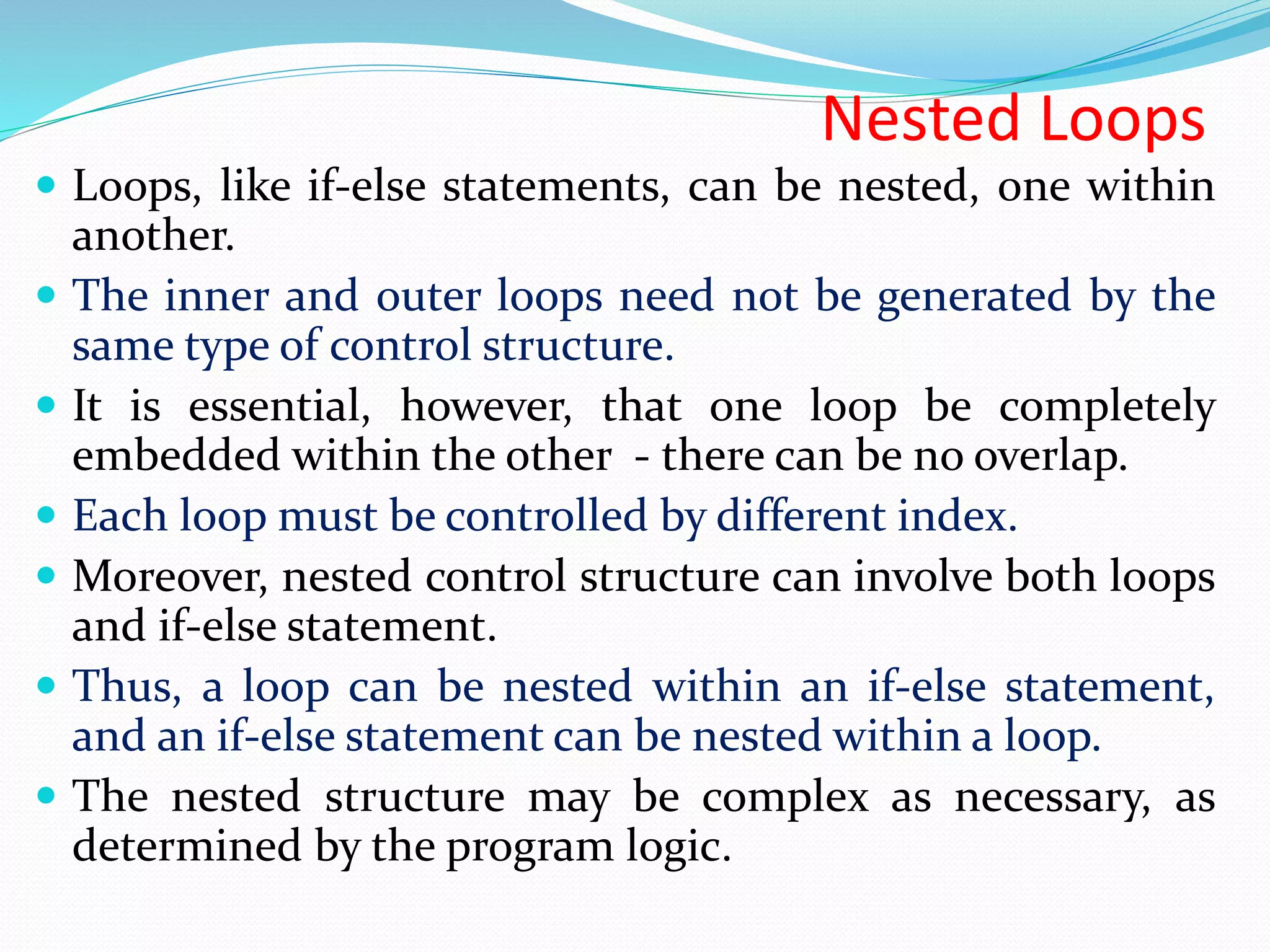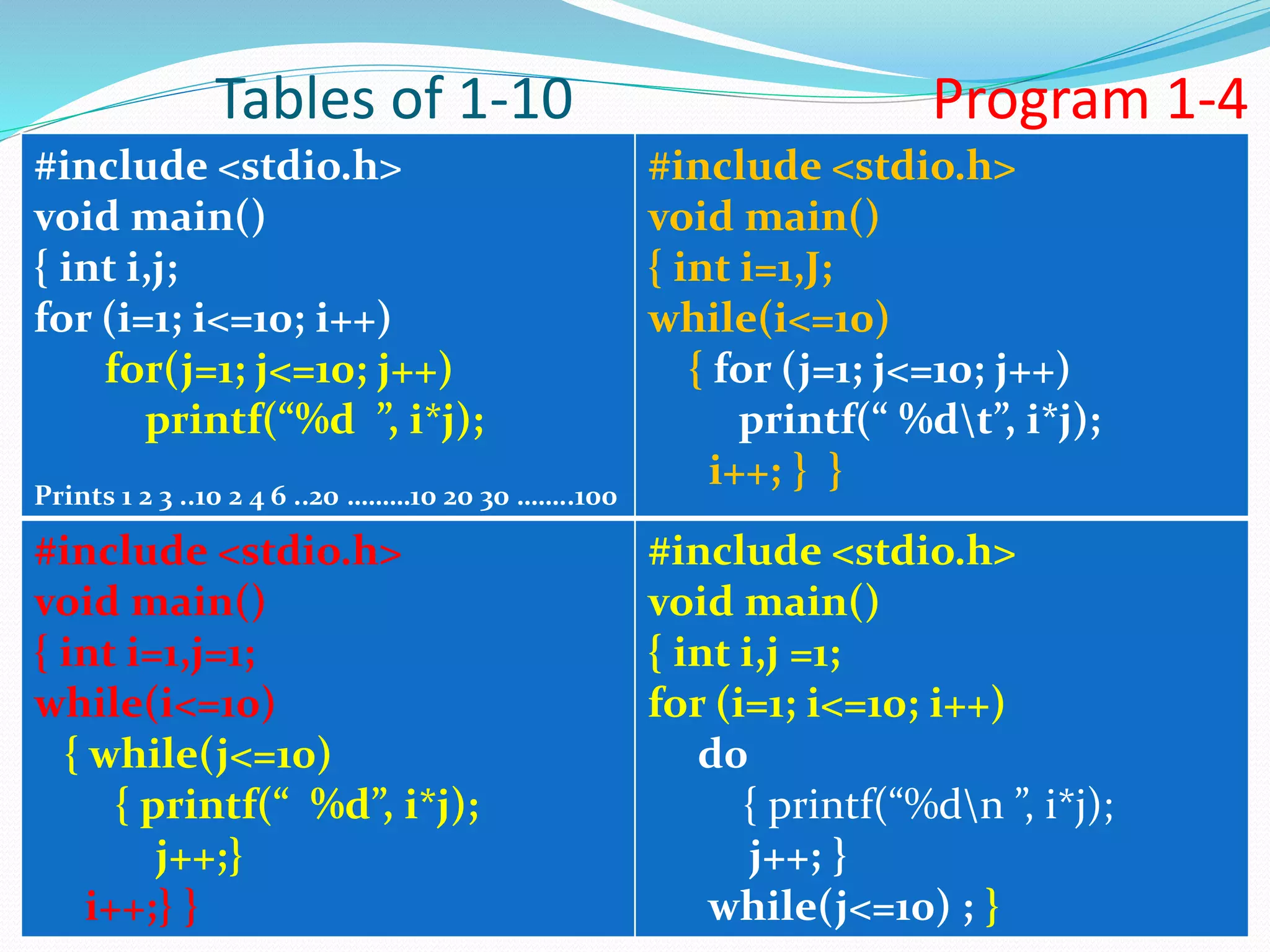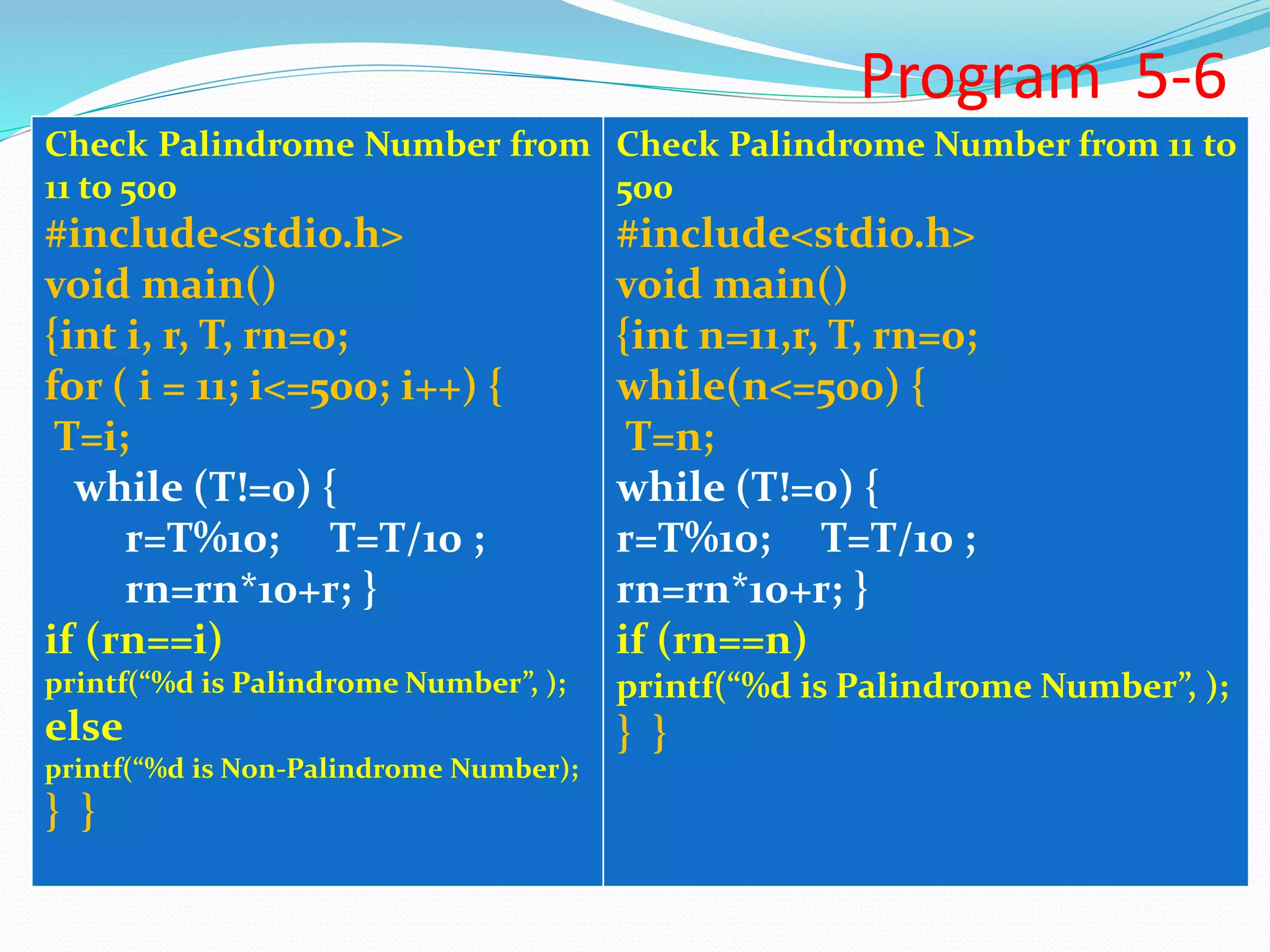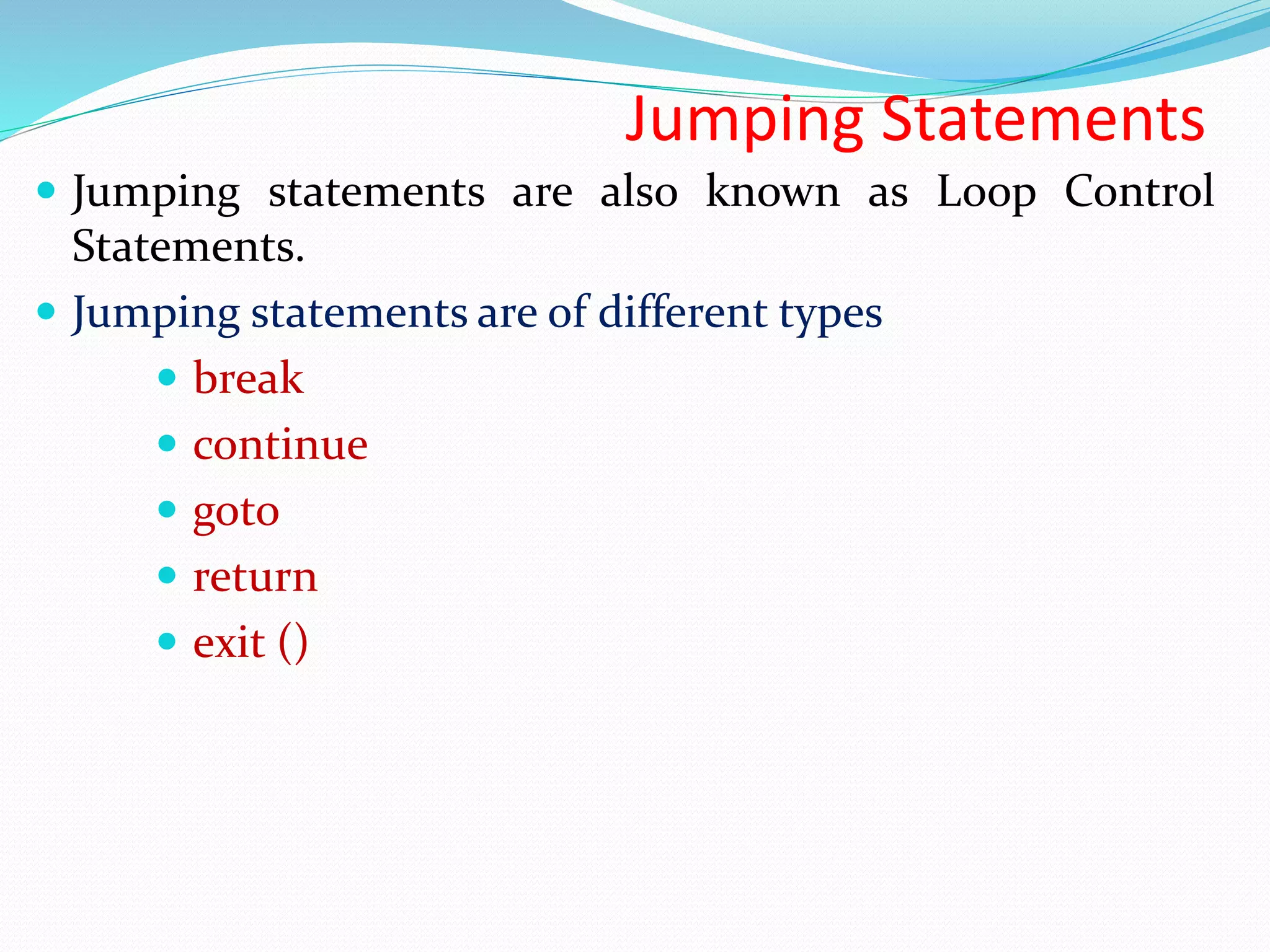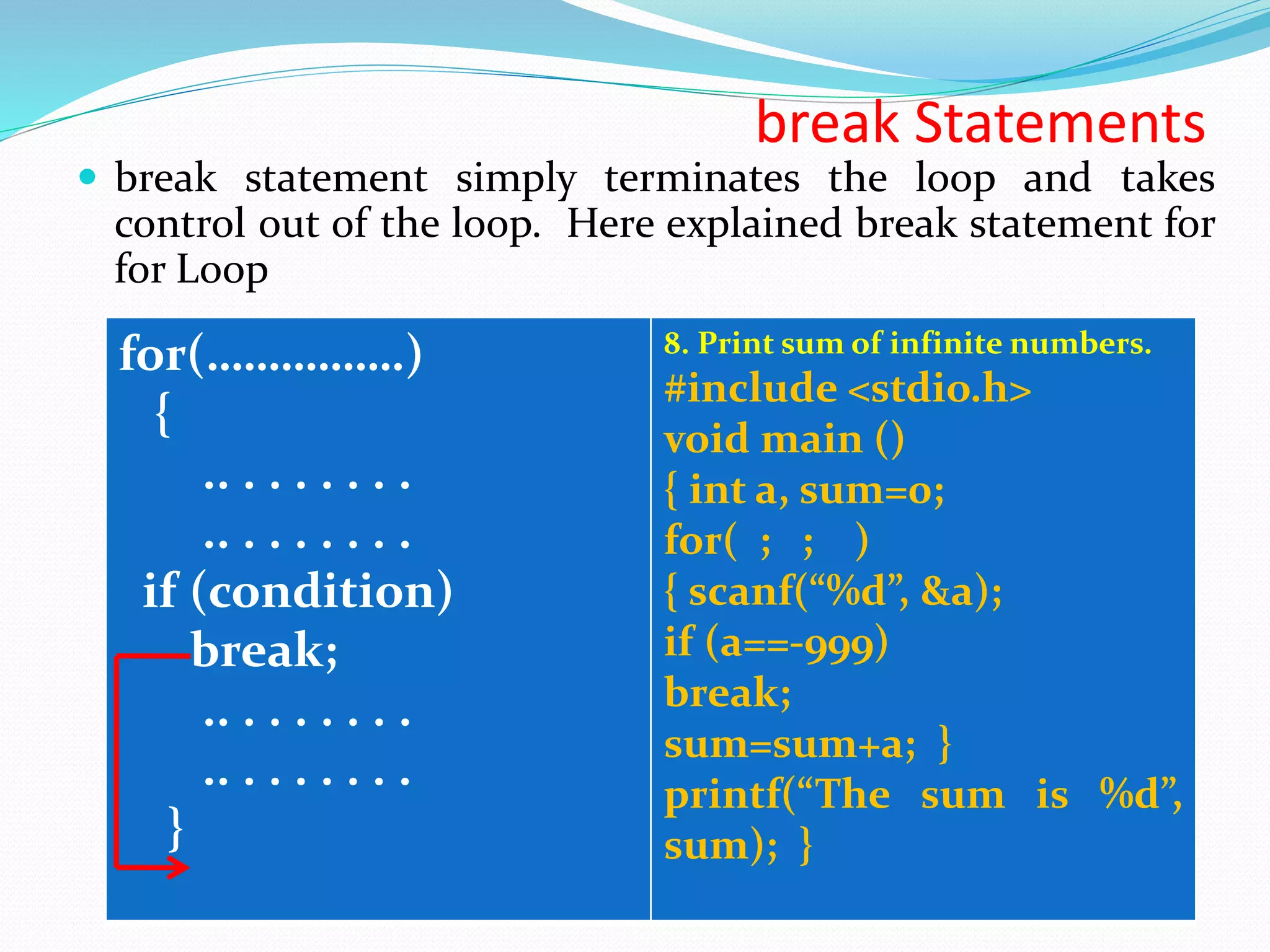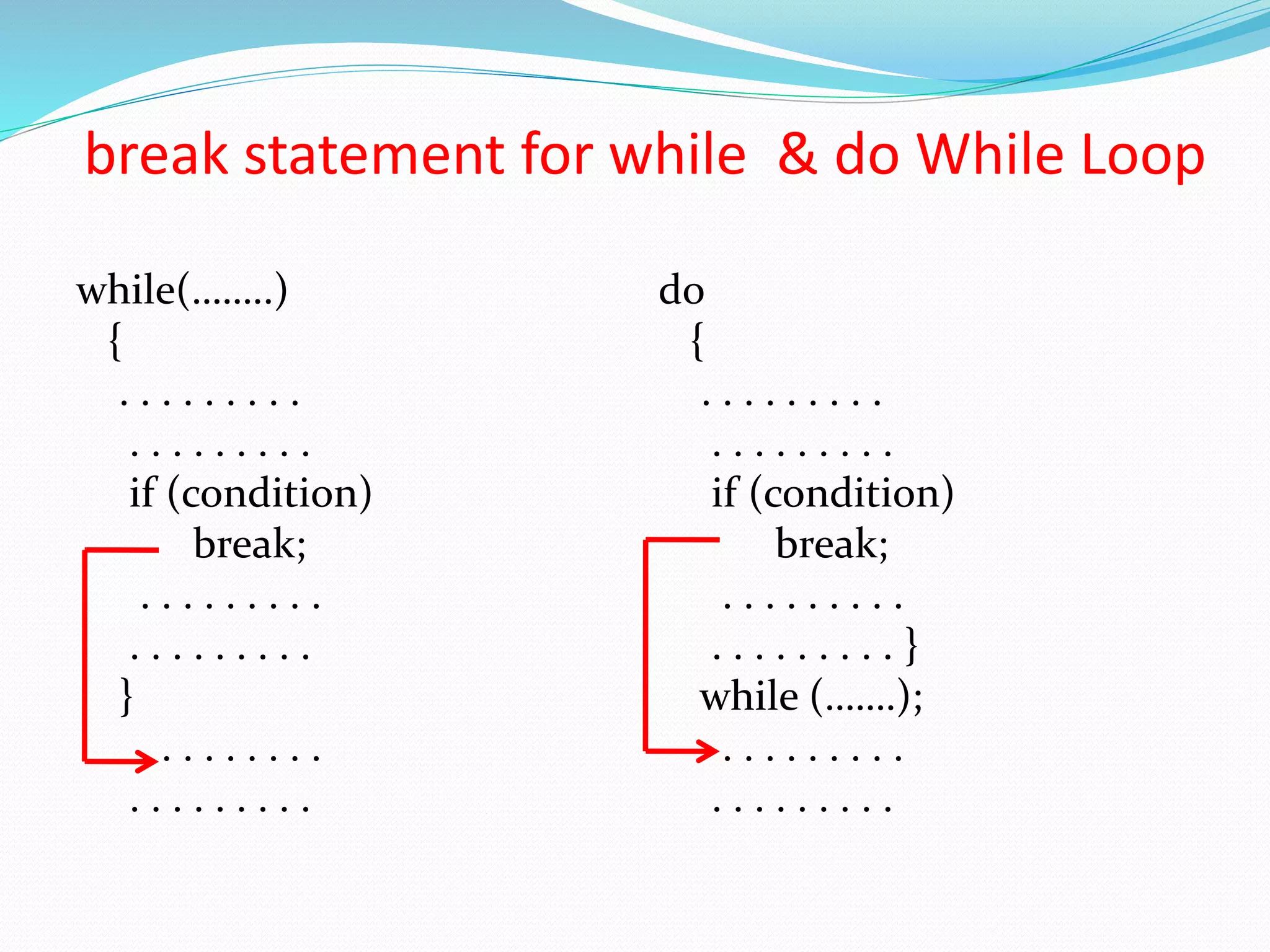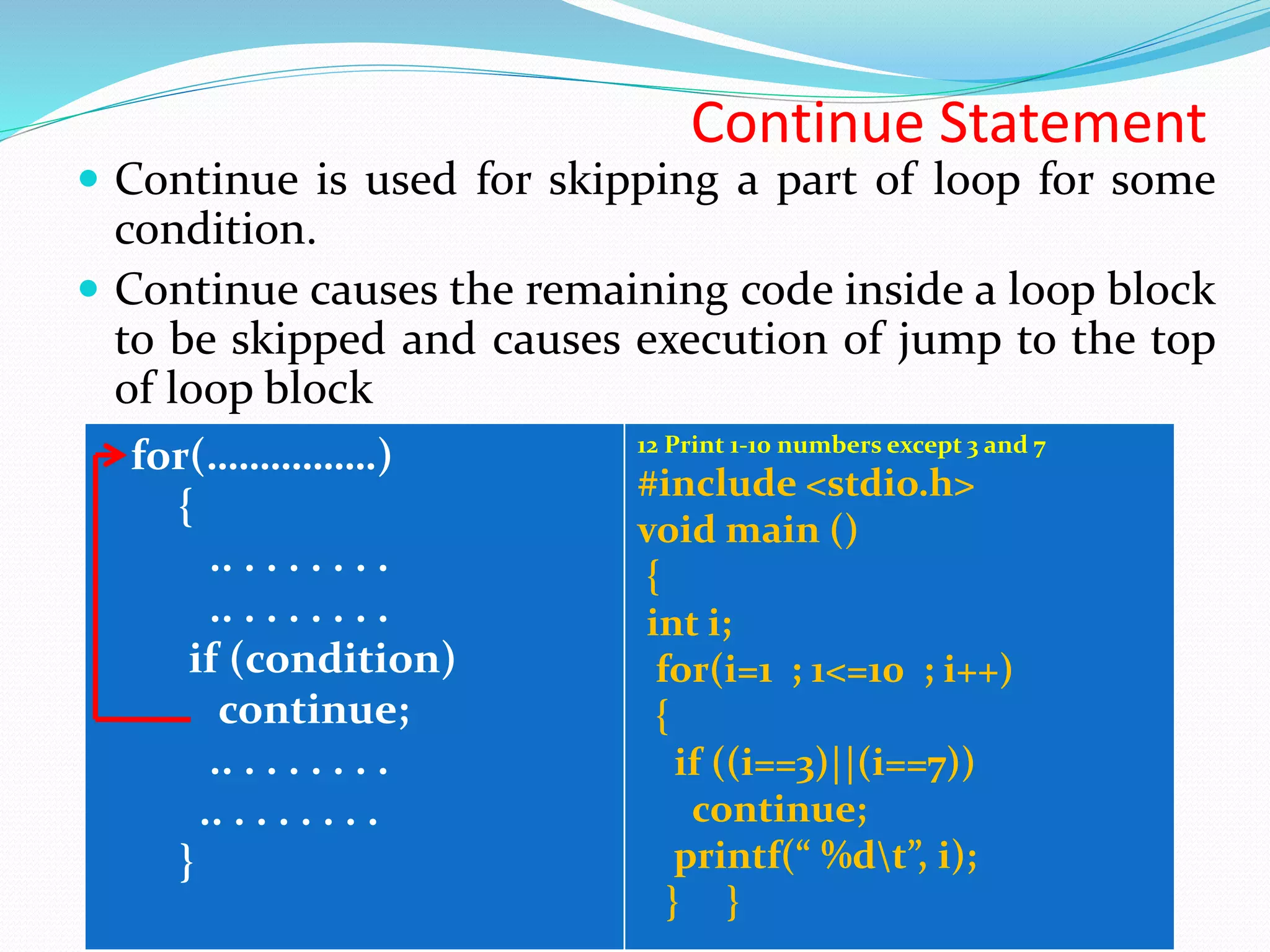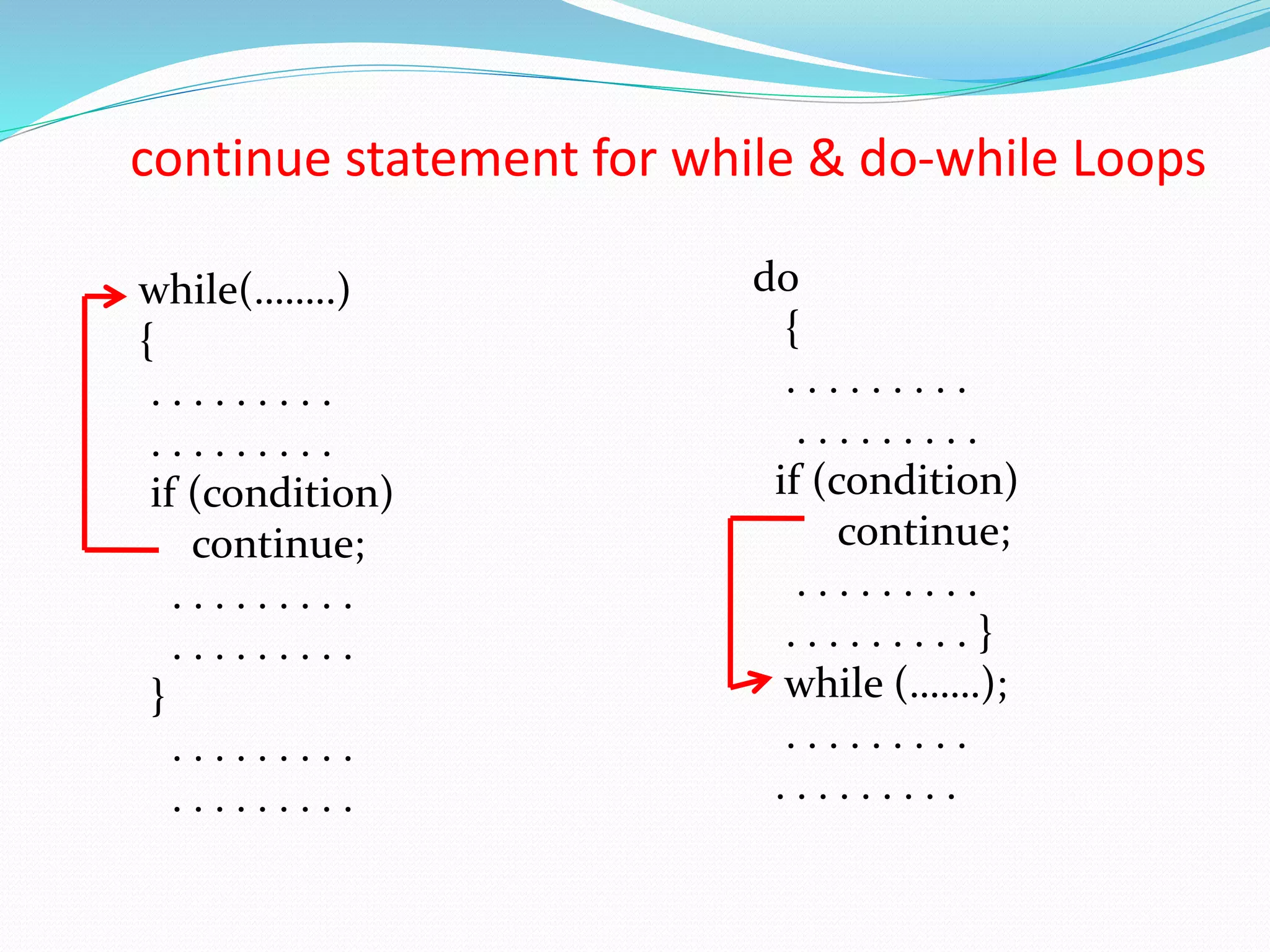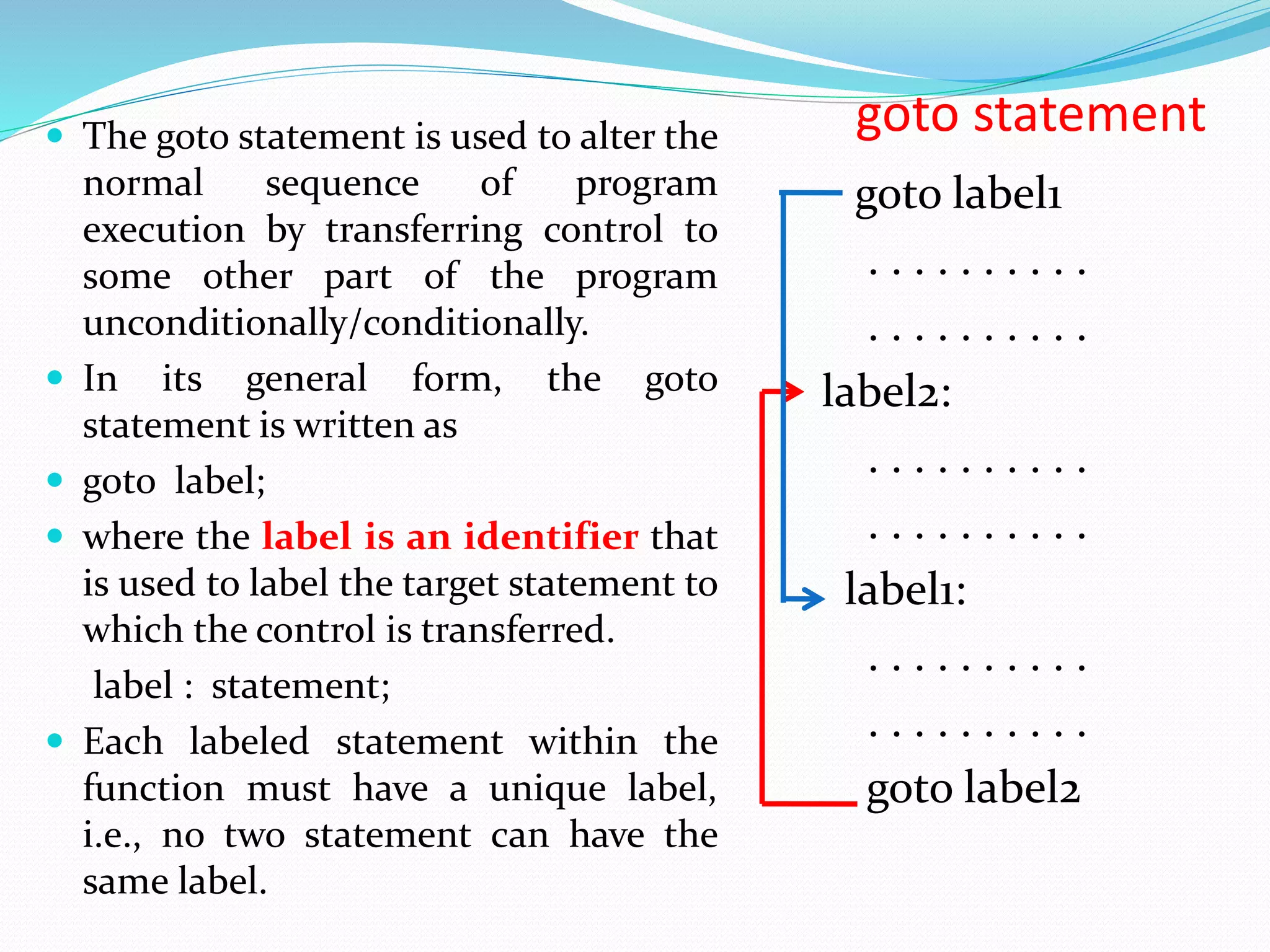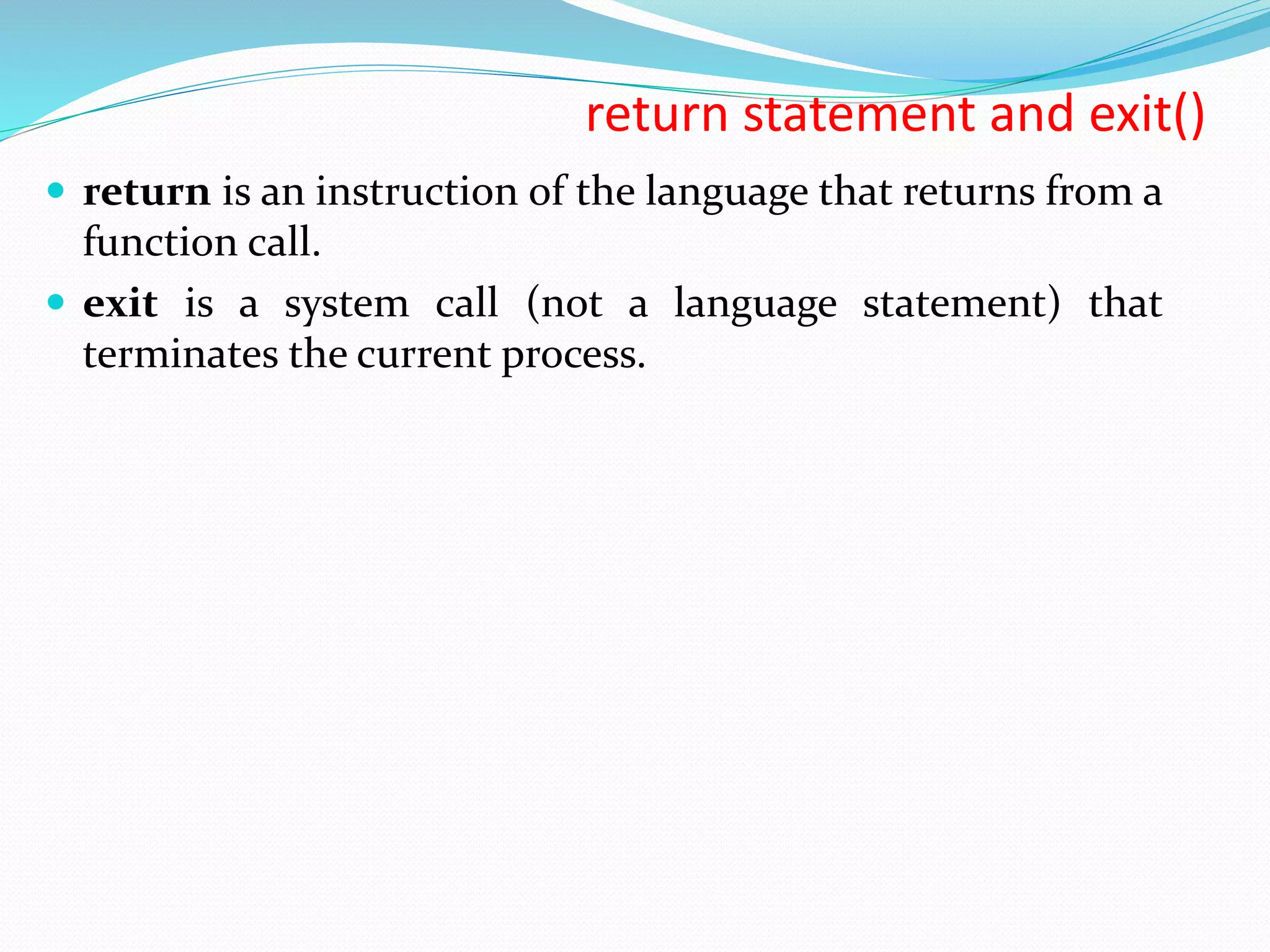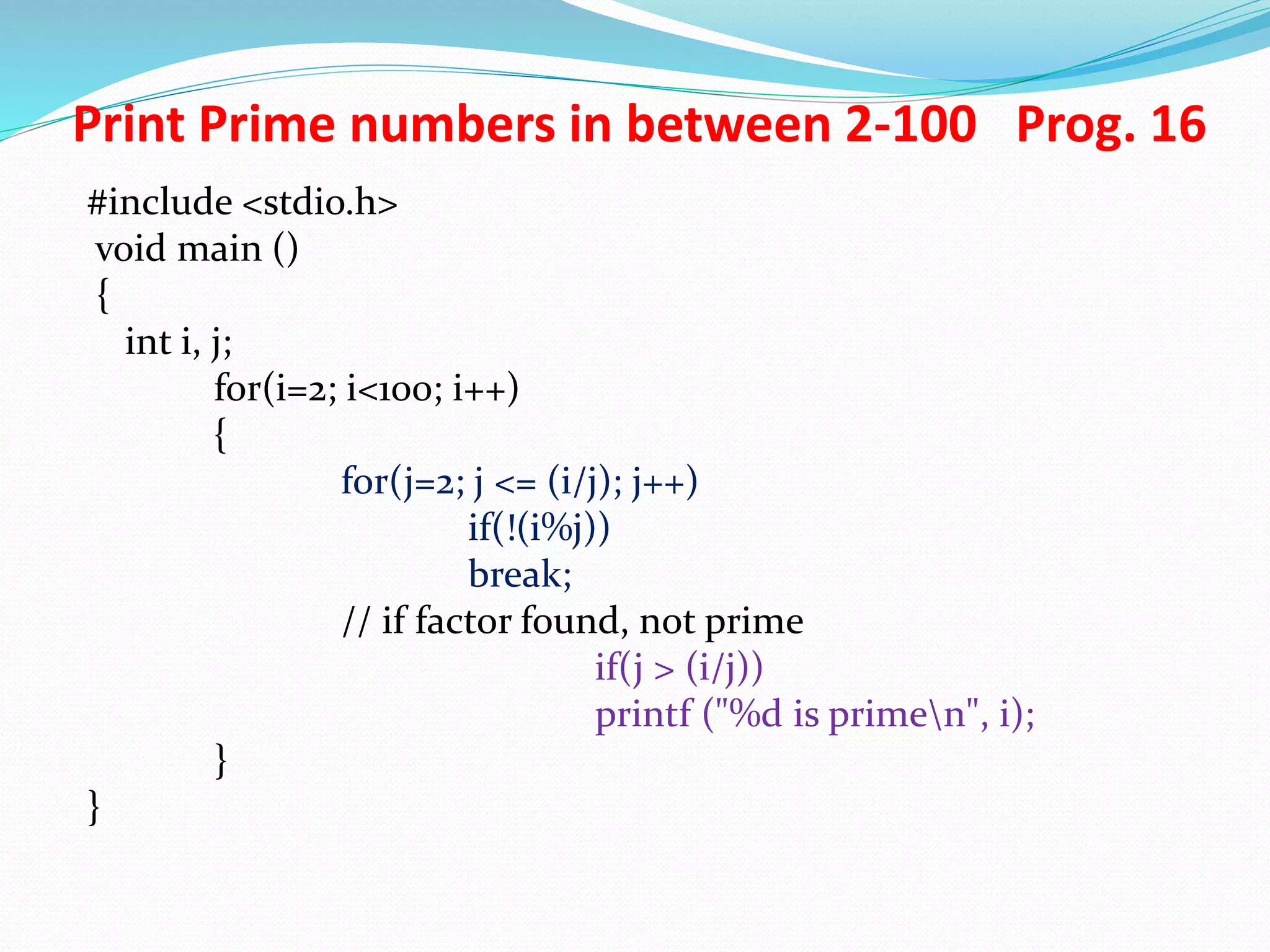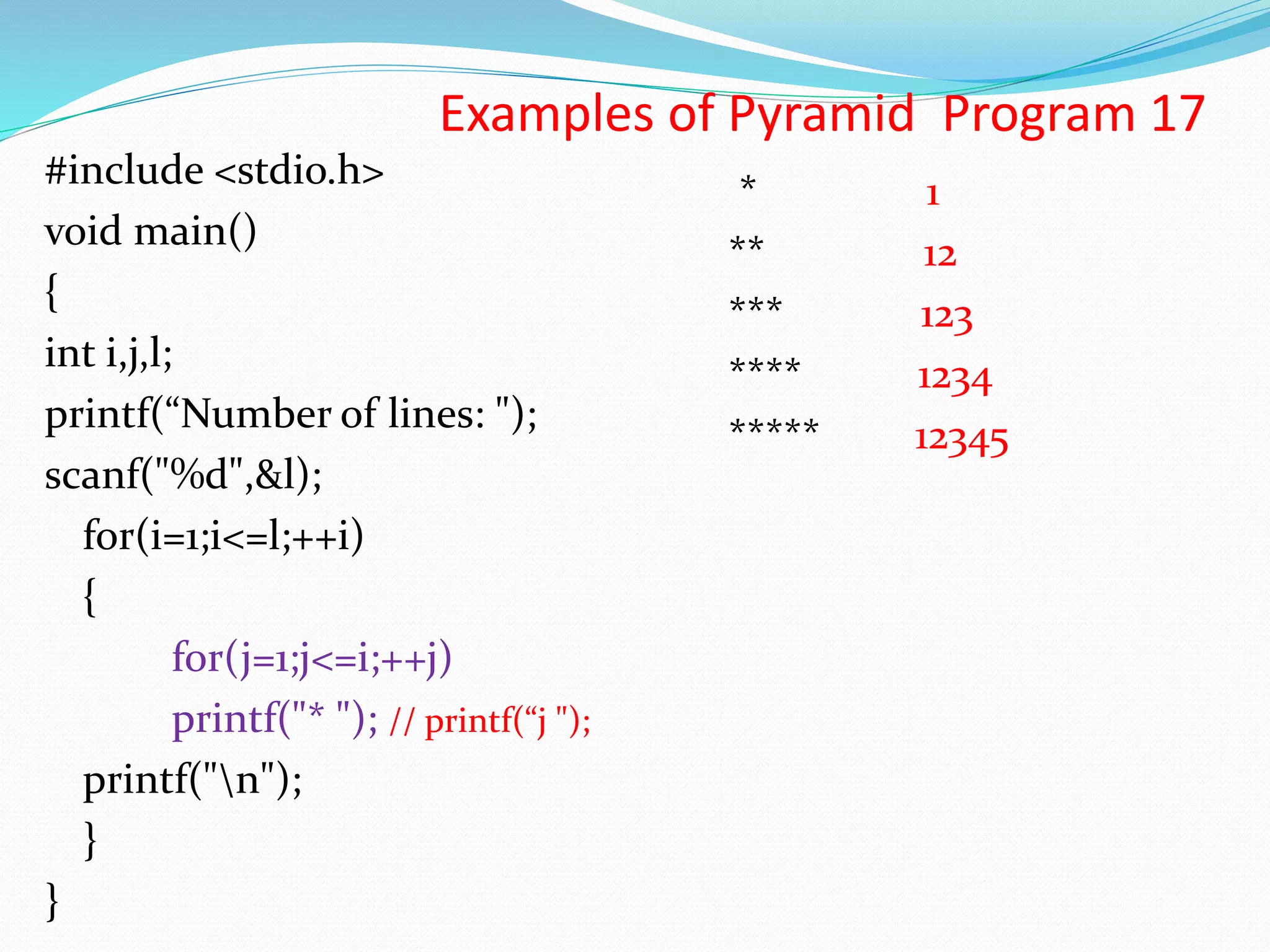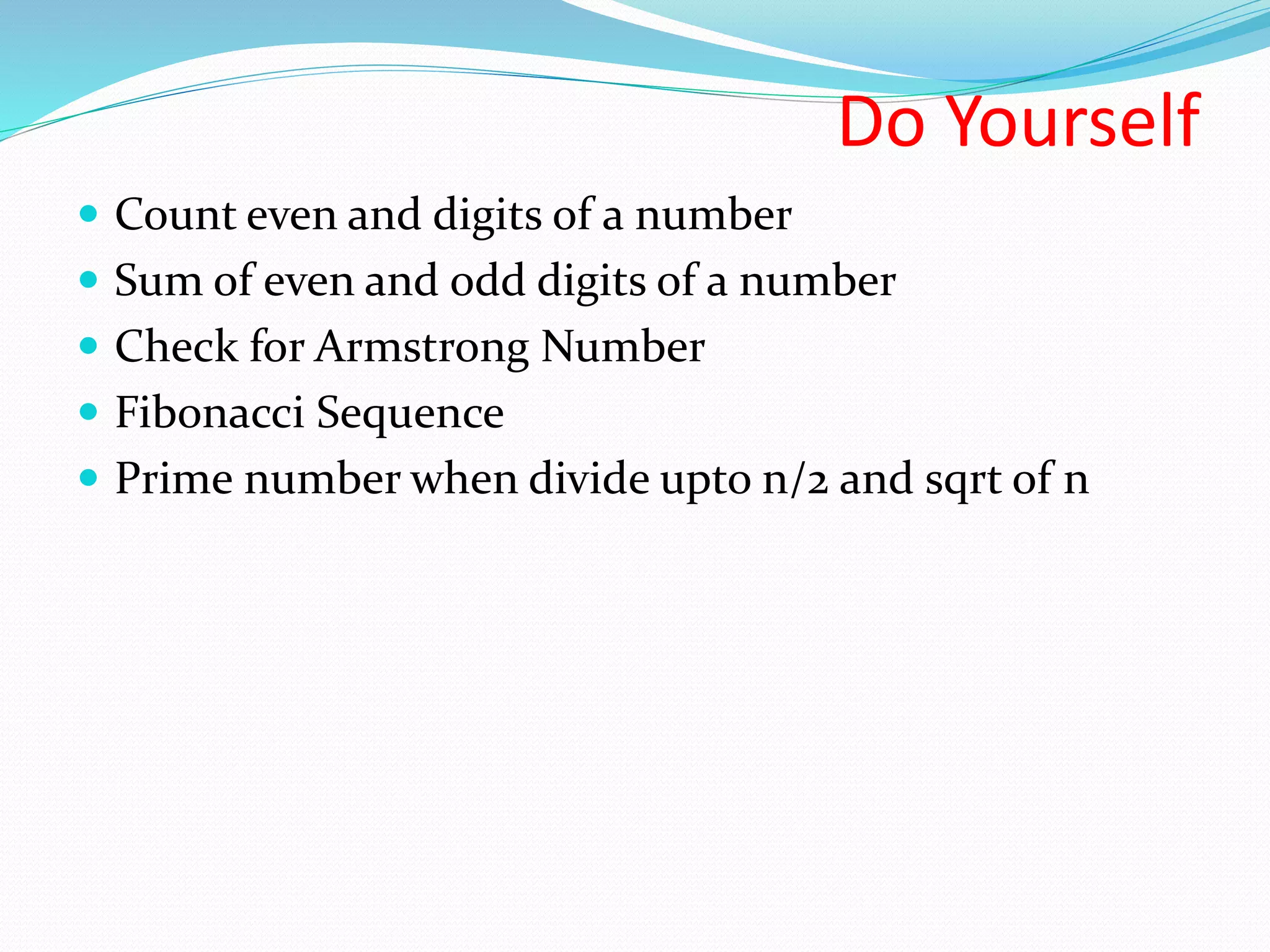The document provides an overview of nested loops and control structures in programming, emphasizing that loops can be nested within each other and with if-else statements. It includes several sample C programs demonstrating the creation of multiplication tables, palindrome checks, and the use of control statements like break and continue. The document also touches on the use of goto statements, returning from functions, and printing prime numbers, along with examples for pyramid structures and additional programming exercises.

